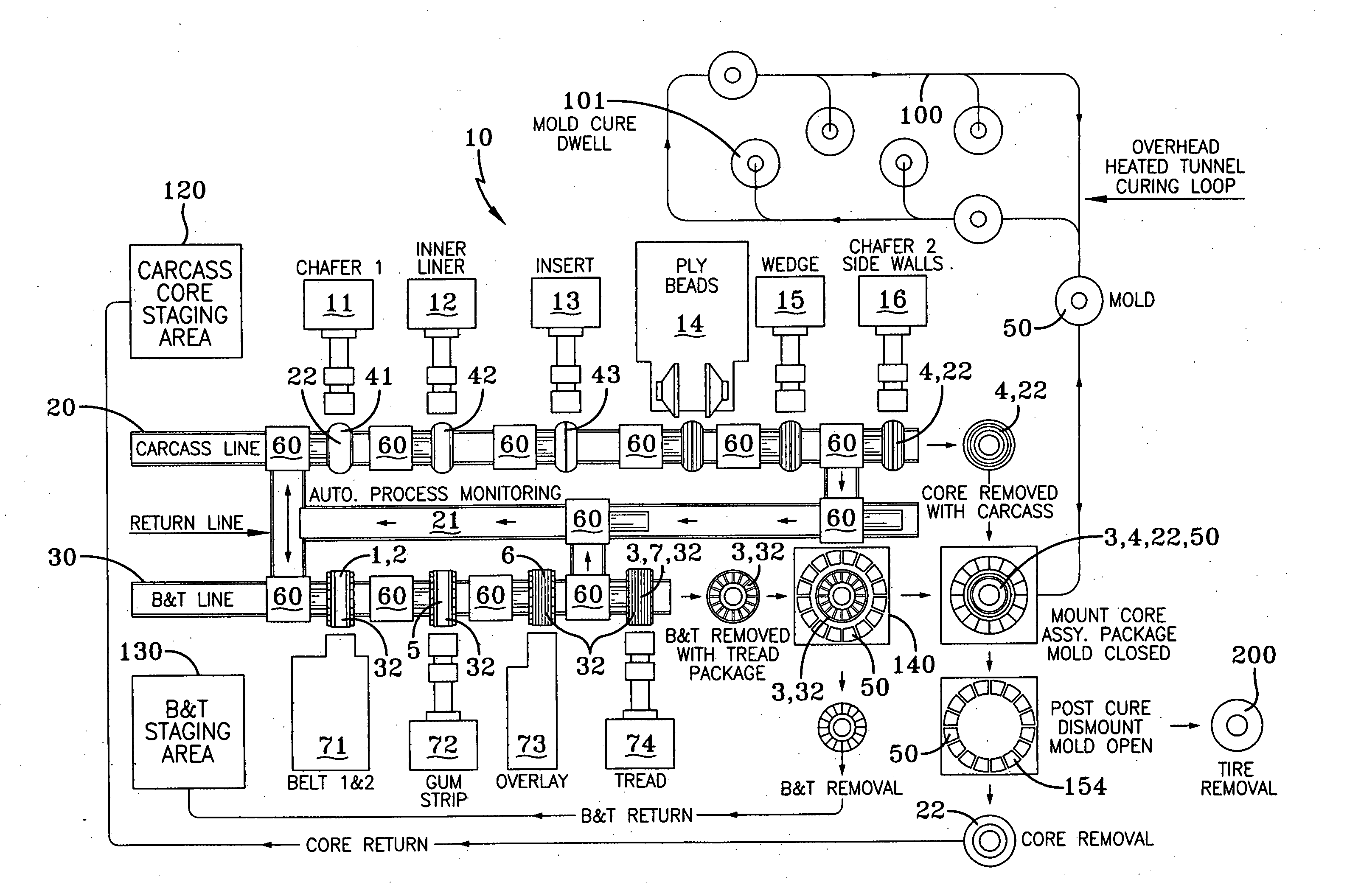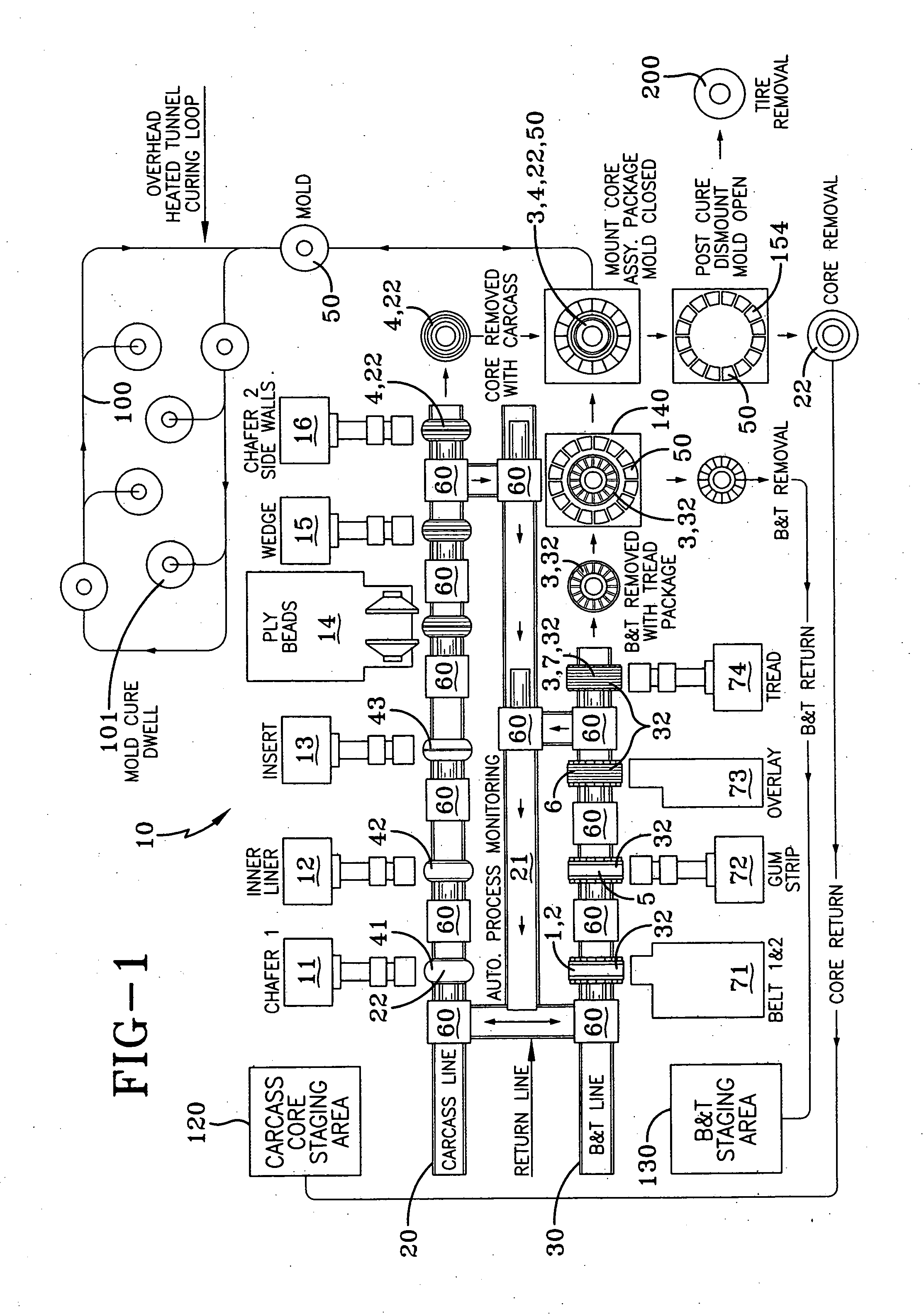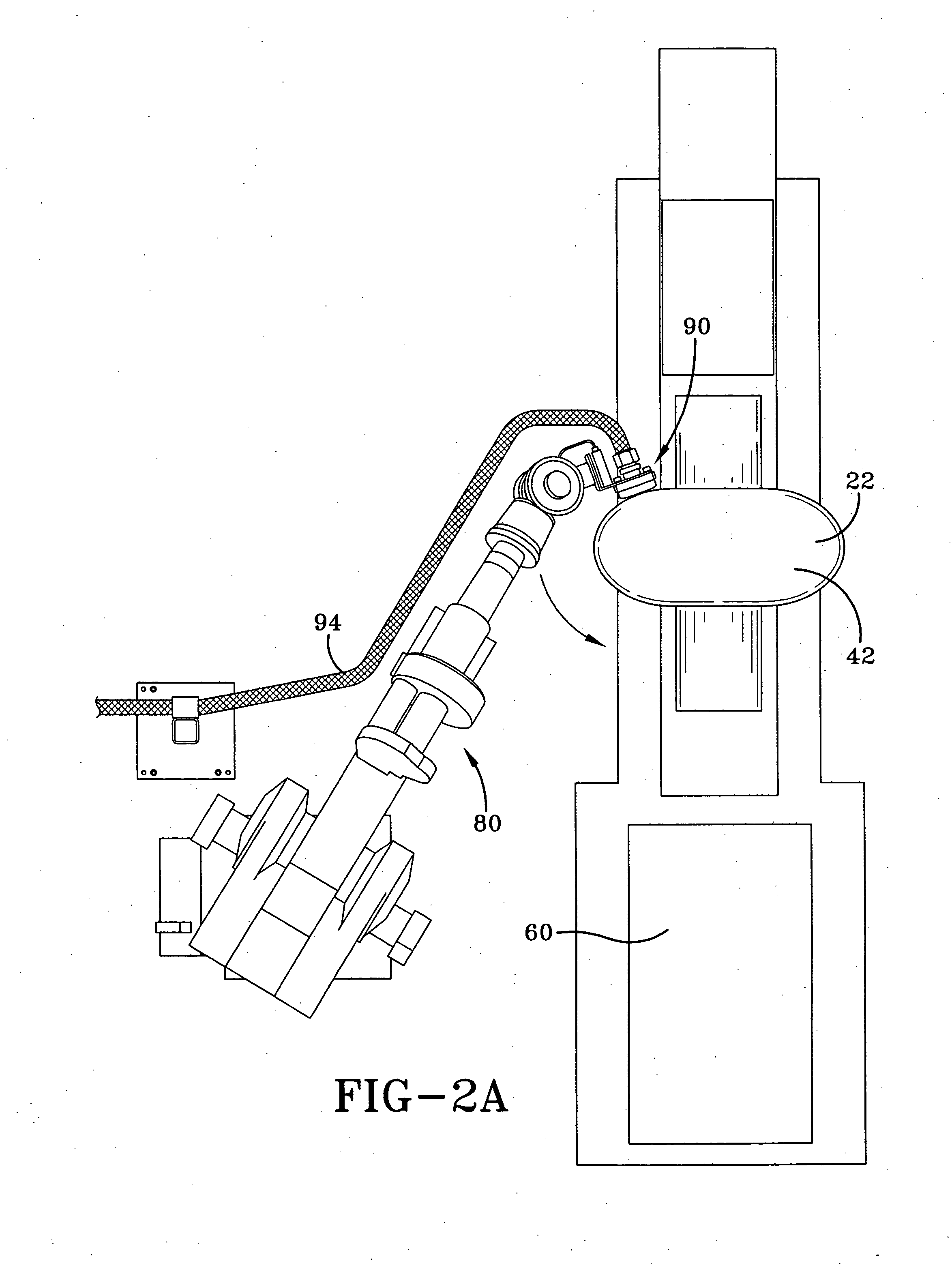Method for manufacturing tires on a flexible manufacturing system
a manufacturing system and flexible technology, applied in the field of automatic tire manufacturing machines, can solve the problems of tire chafing, tire chafing, and large work area for two separate positions, and achieve the effect of preventing tire chafing
- Summary
- Abstract
- Description
- Claims
- Application Information
AI Technical Summary
Benefits of technology
Problems solved by technology
Method used
Image
Examples
Embodiment Construction
[0071] With reference to FIG. 1 a schematic view of an automated tire manufacturing system 10 according to the present invention is illustrated. This system 10 provides for the complete manufacture of pneumatic tires and provides two separate simultaneously operating first and second tire building lines, one line 20 forming the tire carcass subassembly 4, the other line 30 forming the tire belt tread subassembly 3. These two subassemblies 3, 4 will be combined into a tire curing mold 50 after their assembly is completed. When so joined at the tire building mold, the molds 50 will then be transferred into a mold curing loop 100 which permits the tires 200 to be cured, vulcanized and returned to be removed from the molds 50.
[0072] As shown the FIG. 1 at the initial building of a tire there is a carcass core staging area 120. Each core represents a specific tire building drum assembly 22 designed to permit the fabrication of the tire carcass 4 onto the toroidally expanded building dru...
PUM
| Property | Measurement | Unit |
|---|---|---|
| Size | aaaaa | aaaaa |
| Flexibility | aaaaa | aaaaa |
| Distance | aaaaa | aaaaa |
Abstract
Description
Claims
Application Information
 Login to View More
Login to View More - R&D
- Intellectual Property
- Life Sciences
- Materials
- Tech Scout
- Unparalleled Data Quality
- Higher Quality Content
- 60% Fewer Hallucinations
Browse by: Latest US Patents, China's latest patents, Technical Efficacy Thesaurus, Application Domain, Technology Topic, Popular Technical Reports.
© 2025 PatSnap. All rights reserved.Legal|Privacy policy|Modern Slavery Act Transparency Statement|Sitemap|About US| Contact US: help@patsnap.com



